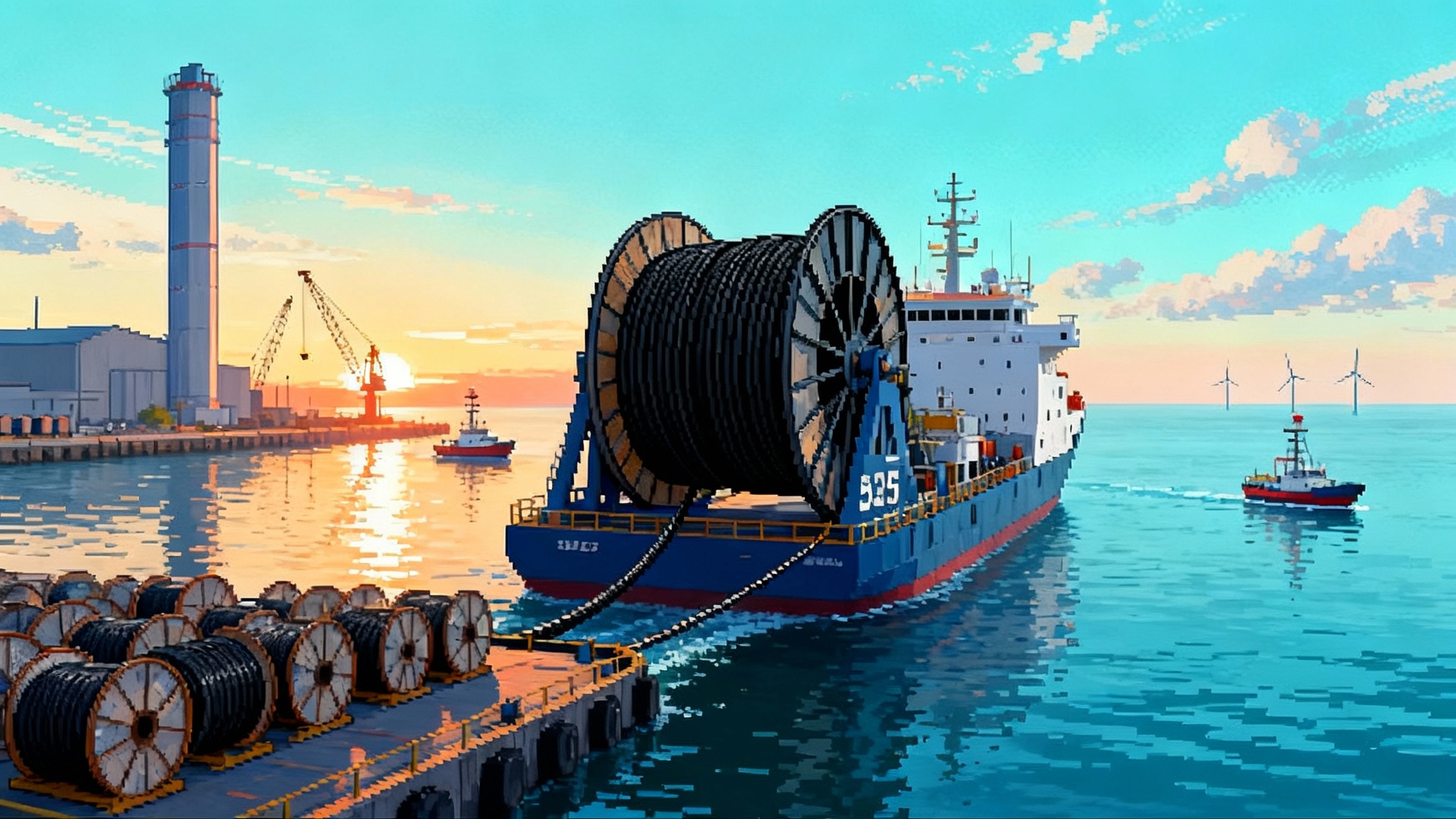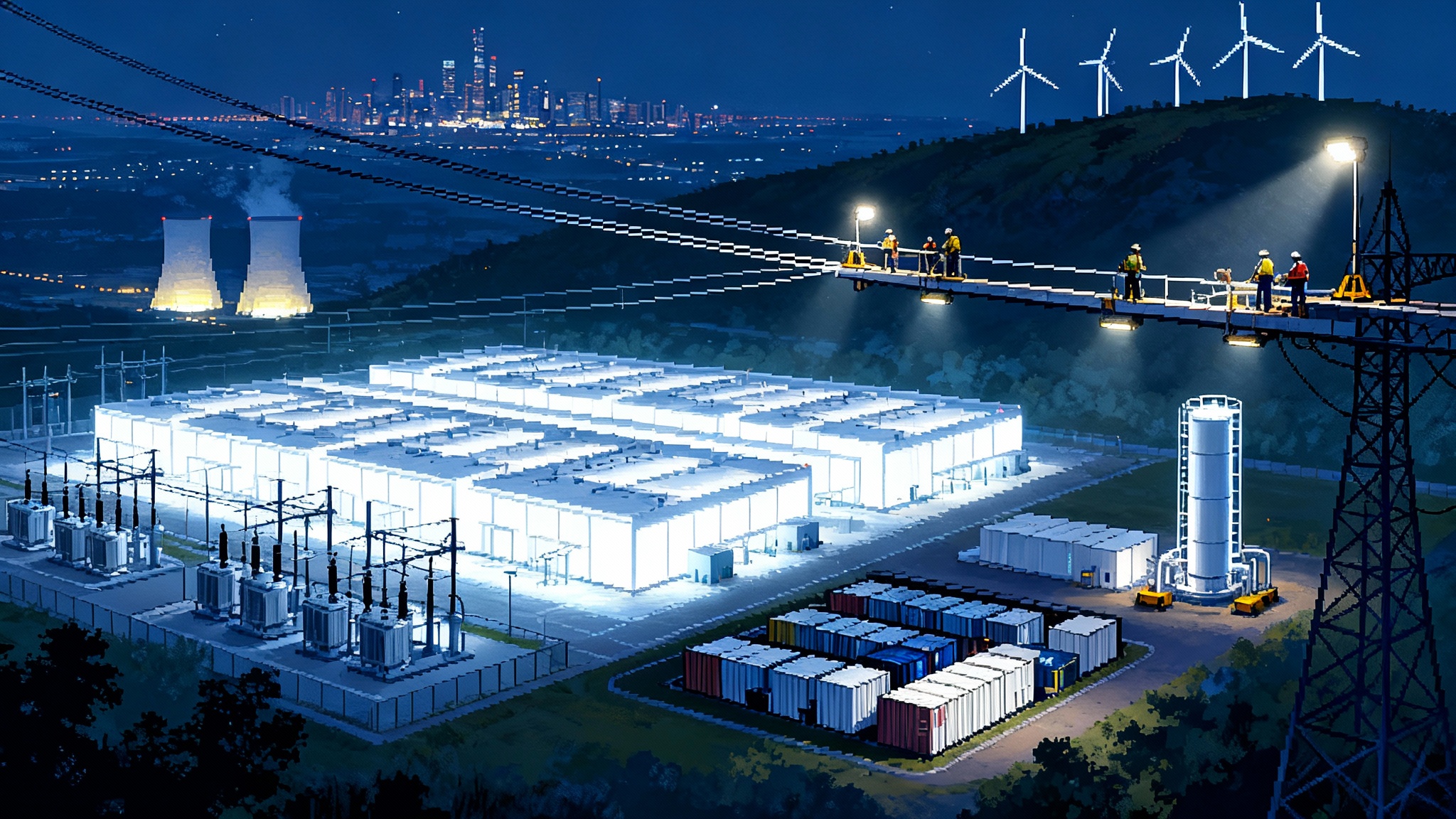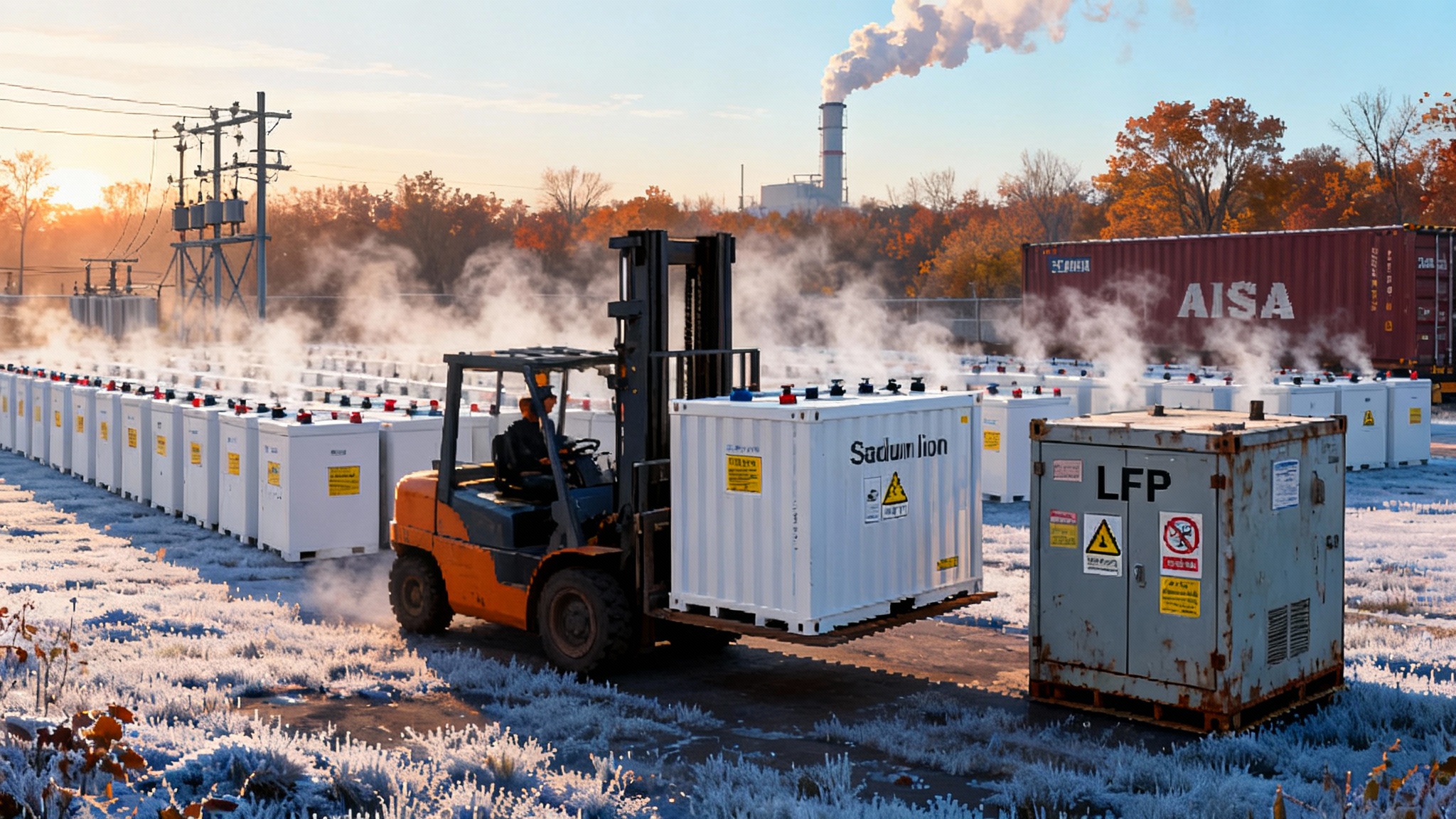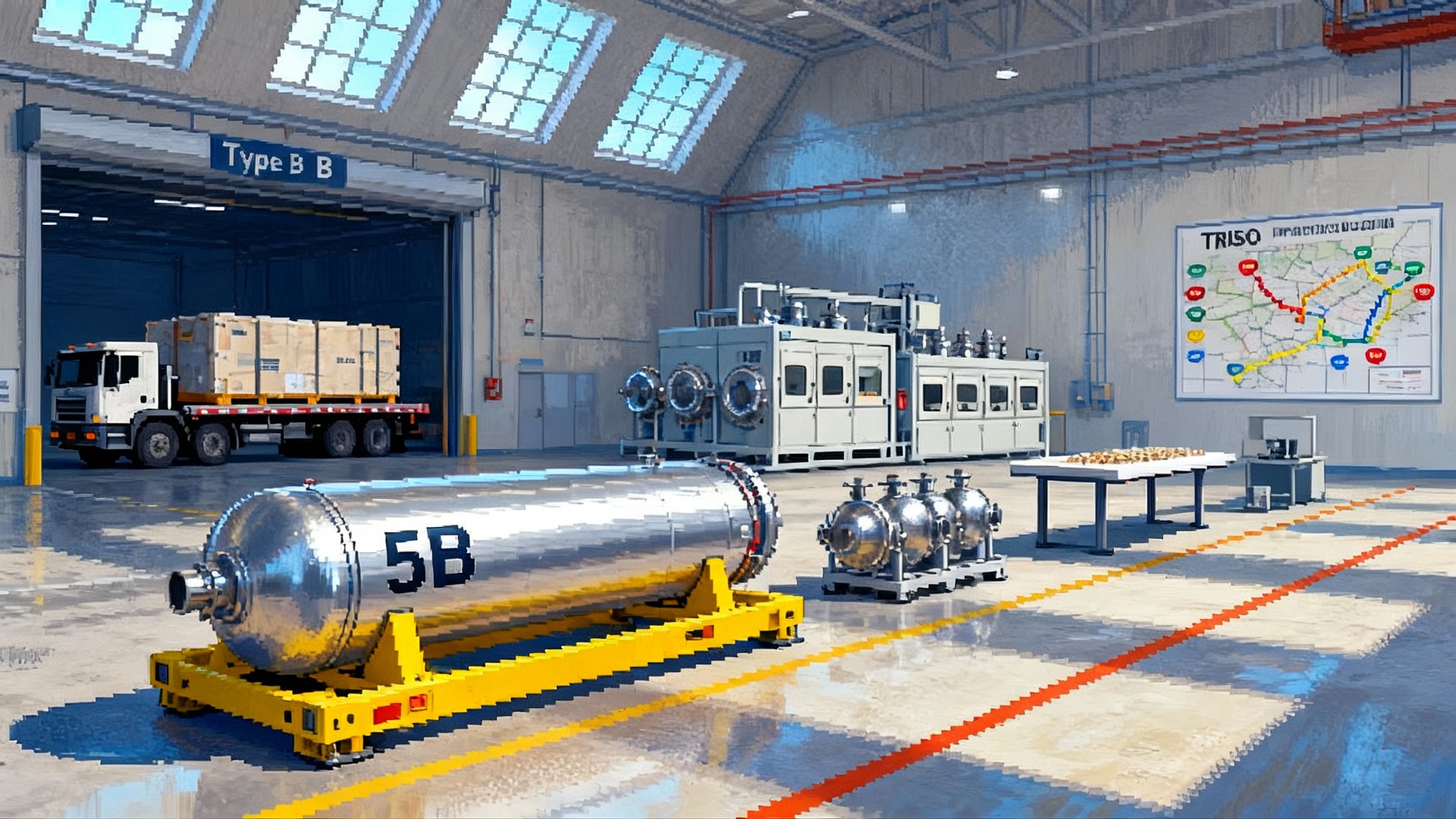Inside 45Z’s First Year: Winners, Bottlenecks, Next Moves
Treasury and IRS finalized 45Z guidance on January 10, 2025, and DOE followed with the 45ZCF GREET model. This guide translates emissions tables into dollars per gallon, explains who is cashing in now, what is constrained, and how to position for 2026–2027.
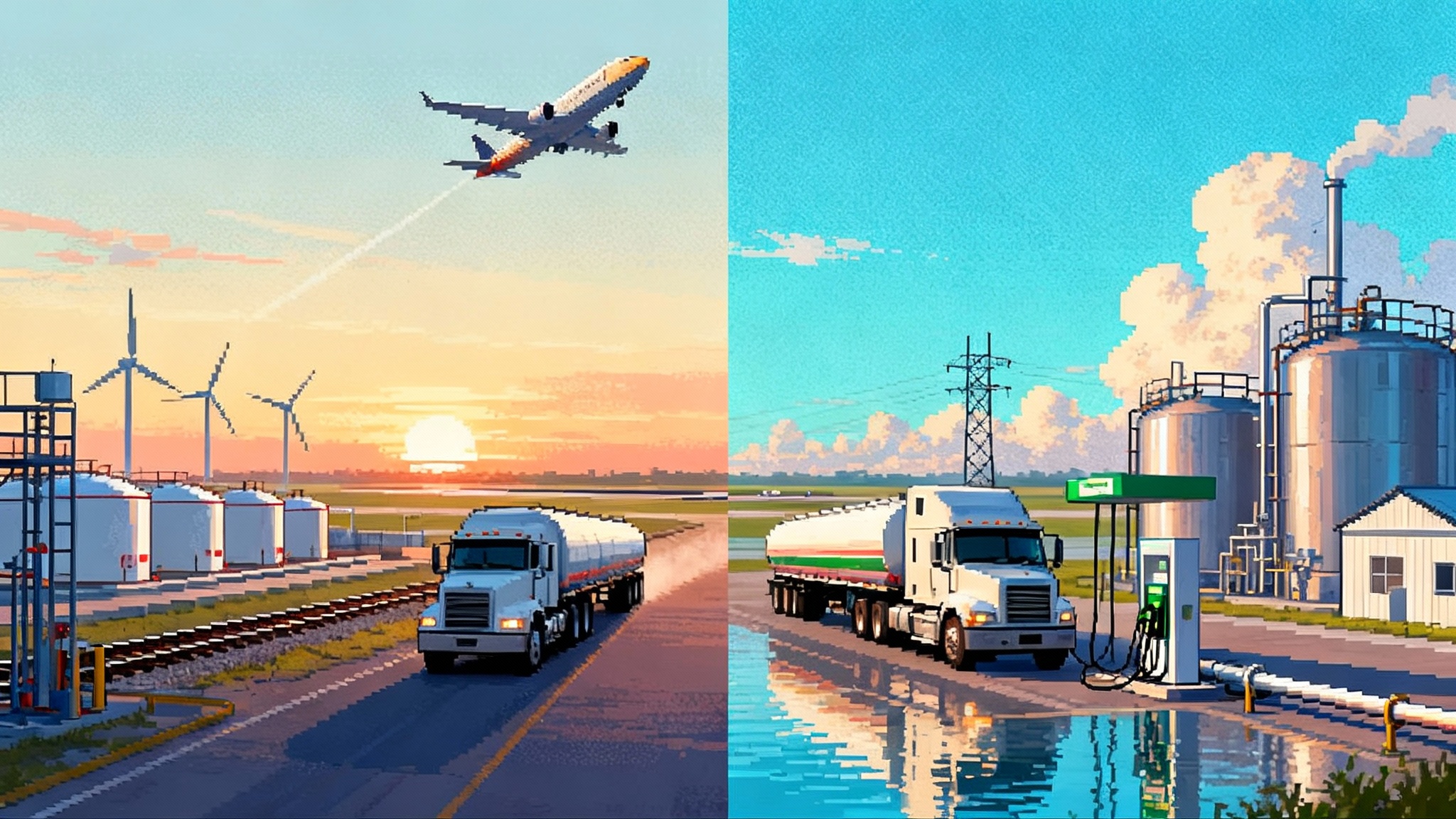
Breaking start: the rules arrived, the math started working
On January 10, 2025, Treasury and the Internal Revenue Service released rules that switch on the Clean Fuel Production Credit, known as 45Z. The package included eligibility definitions, a first annual emissions rate table, and the roadmap for how producers convert lifecycle carbon intensity into dollars per gallon at tax time. The notice made one point unmistakable: 45Z does not pay for volume, it pays for verifiable carbon performance. See Treasury’s January 10, 2025 guidance. That same week Treasury pointed to a Department of Energy model, and DOE followed five days later with the 45ZCF GREET tool. See the DOE 45ZCF GREET model announcement.
The simple engine inside 45Z dollars
45Z ties the value of a fuel to how much it beats a statutory emissions baseline.
Here is the core equation in plain language:
- The law sets 50 kilograms of carbon dioxide equivalent per million British thermal units as the baseline. Call it 50.
- Each fuel pathway receives an emissions rate from DOE’s 45ZCF GREET or, for aviation, an approved international method. Call your number E.
- Your emissions factor is the share of the baseline you beat: (50 minus E) divided by 50.
- Your credit per gallon or gallon equivalent equals the applicable amount multiplied by that emissions factor.
Two applicable amounts matter for planning:
- Base amount without labor standards: 20 cents per gallon equivalent.
- Increased amount when prevailing wage and apprenticeship requirements are satisfied: 1.00 dollar per gallon equivalent.
Sustainable aviation fuel had a different rate in early 2025, then Congress updated the statute in mid 2025 to align applicable amounts across fuels going forward. The practical takeaway is the same: the closer your lifecycle number gets to zero, the more of that 1.00 dollar you capture per gallon equivalent, with inflation adjustments nudging the amounts annually.
Three quick examples:
- If your emissions rate is 30, your factor is (50 − 30) ÷ 50 = 0.40. With labor rules satisfied, the credit is 1.00 × 0.40 = 40 cents per gallon equivalent.
- If your emissions rate is 10, your factor is 0.80. Credit is 80 cents per gallon equivalent.
- If your emissions rate is 50 or higher, there is no 45Z value.
Note the phrase gallon equivalent. That normalizes for energy content, so a diesel gallon equivalent of renewable natural gas is treated comparably to a liquid gallon of renewable diesel in the final credit calculation.
The model that sets the numbers
Treasury’s emissions rate table points to the correct methodology. For non‑aviation fuels, that is DOE’s 45ZCF GREET. For aviation, producers can use 45ZCF GREET or accepted international methods where allowed. DOE released the model and a user manual on January 15, 2025, specifically configured for 45Z pathways and verification.
What the model does for business is standardize the carbon math. It tells a renewable diesel plant in Port Arthur and an ethanol plant in Iowa what inputs they must report, how to account for electricity, heat, transport, and coproducts, and how those data convert into the emissions rate that ends up in your return. It is also the gatekeeper for new or improved pathways over time, which matters for 2026 and 2027 planning.
Who is winning in 2025 and why
Winners this year share one trait: they can prove a low emissions rate with data that auditors and the model accept.
-
Renewable diesel and sustainable aviation fuel made from waste oils and fats. Facilities sourcing used cooking oil or tallow and running efficient hydrotreaters are posting emissions rates far below petroleum diesel. With labor compliance in place, a plant that lands at E around 20 could see roughly 60 cents per gallon equivalent. Scale players include Diamond Green Diesel, Neste, Marathon, and Phillips 66 in renewable diesel, plus early sustainable aviation fuel producers supplying major airlines. The constraint is feedstock, which we cover below.
-
Ethanol producers that bolt on carbon capture and decarbonize energy use. Fermentation capture is technically straightforward, but the story is steam, electricity, and transport. Where a plant lowers on‑site energy emissions and secures a carbon dioxide takeaway solution, it can push E into the 30s or lower, which pencils at 20 to 40 cents per gallon. Groups like POET, ADM, and Valero have published decarbonization ambitions and are weighing capture and process heat upgrades. The hurdle is the pipeline to move and store the captured carbon, and the strategic choice between 45Q for storage and 45Z for fuel value, since facilities cannot stack both for the same operation in the same year.
-
Renewable natural gas to compressed natural gas for heavy duty fleets. Landfill gas and wastewater gas projects already fit. Manure based projects can achieve very low, sometimes net negative, lifecycle values when methane destruction is accounted for. Where the emissions rate is deeply below zero, the emissions factor can exceed 1 in cases where regulations allow. That drives very large per gallon equivalent credits for fuel sold into fleet fueling networks. Developers like Clean Energy, Archaea Energy, and Brightmark are aligning supply with fleet offtakers that can document transportation use. If you are building depot infrastructure, our megawatt truck charging playbook helps plan site power alongside fuel strategy.
What is constrained and why the constraints are structural
-
Feedstocks are a real ceiling. Waste oils and fats are finite, and imports are politically sensitive. Competition from renewable diesel, sustainable aviation fuel, and the chemical sector pushes prices up. Blending strategies that diversify across used cooking oil, tallow, distillers corn oil, and emerging residues help, but each new stream brings verification and traceability chores.
-
Carbon dioxide transport and storage are pacing items for ethanol plus capture. The technology to capture fermentation carbon is proven, but the carbon must move to a well sited storage project with permits and community support. Projects that counted on a single multistate pipeline learned that routing is not a spreadsheet variable, it is local relationships. Companies with options, including on‑site utilization, short haul to existing corridors, or modular injection attached to proven geology, will move fastest. Capital markets now underwrite this risk with sequencing, not with a single check.
-
Verification is the new bottleneck on paper. 45Z pays for measured lifecycle performance, not labels. That means contracts for metering, data logging, chain of custody, and third party review. If you have ever built a Sarbanes Oxley compliant close process, imagine the same discipline for mass and energy balances. Companies that assign a single executive to own measurement, reporting, and verification win time and reduce audit risk.
-
Anti‑stacking and eligibility rules remove some easy wins. A facility cannot claim 45Z when it already uses certain other federal credits for the same activity. That forces a decision tree for ethanol producers contemplating capture equipment: is the bigger lifetime value in 45Q for permanent storage or in 45Z through higher price realization on every gallon sold.
What changed in mid 2025 and what it means for 2026–2027
Congress adjusted 45Z in mid 2025. The practical effects for operators are threefold.
-
Applicable amounts converged. The statute aligned the headline per gallon amounts across fuels going forward. For modeling, do not assume a permanent aviation premium in your 2026 plan unless your offtake agreement explicitly addresses it.
-
Indirect land use change is excluded from Treasury’s emissions rates. That removes a source of variability for crop based fuels and shifts attention to on‑farm practices, transport, and plant energy use. It also increases the business value of documented climate smart agriculture, which Treasury signaled it intends to recognize once methodology updates are proposed and adopted.
-
Distinct treatment for animal manure pathways opened the door to very low or below zero lifecycle numbers where the methodology supports it. Renewable natural gas developers tied to fleets should plan for documentation standards that are at least as strict as credit markets in California, then layer on 45Z specifics.
Agency work defines the 2026–2027 arc:
-
Provisional Emissions Rates. Treasury’s guidance allows petitions to establish a provisional emissions rate when a fuel plus feedstock pathway is not yet in the table. Expect the formal process to be clarified, then used by novel producers that can bring high quality data and independent measurement. If you are developing pyrolysis oil, co‑processing models that can pass statutory tests, or new gasification plus Fischer Tropsch routes, build a PER dossier now.
-
Updates to 45ZCF GREET. DOE will iterate the model as new pathways mature and as Treasury finalizes rules on climate smart agriculture and other inputs. A producer that captures and stores fermentation carbon, switches to renewable electricity, and documents reduced fertilizer intensity wants those moves to show up in a lower E. Track model notes as seriously as you track diesel prices. For adjacent policy dynamics that affect project finance, see 45Y and 48E tech neutral credits and our Hydrogen 45V rules reality check.
How the emissions tables turn into cash, with real world patterns
Here is how the emissions rate table translates to a per gallon equivalent credit in practice for three archetypes.
-
Renewable diesel from used cooking oil with efficient hydrogen and heat integration. A good plant can land E near 20. With wage and apprenticeship compliance, that is about 60 cents per gallon equivalent. A plant using grid power in a coal heavy region could drift higher, say E around 28, which is about 44 cents. The swing is in electricity and hydrogen choices, plus transport distances.
-
Corn ethanol with fermentation capture, electrified drives, and a switch from coal to gas or biomass for process heat. If that package brings E to 35, the factor is 0.30 and the credit is 30 cents per gallon. If the same plant electrifies further, sources certified low carbon power, and shortens rail legs, E can drop closer to 30, and the credit approaches 40 cents. The difference funds more upgrades or improves netbacks to farmers.
-
Renewable natural gas from dairy manure routed to compressed natural gas for trucks. Documented methane control can push E far below zero. Where rules allow a below zero rate, the factor can exceed 1, so credits can top 1.00 dollar per diesel gallon equivalent. The gating items are monitoring, verification, and a clear book and claim chain into a transportation use at a station with defensible data.
A concrete playbook to capture upside in 2025–2027
For producers
-
Register correctly and early. You cannot claim 45Z without registration as a producer. Assign a leader to own form preparation, recordkeeping, and ongoing compliance. Confirm your Activity Letter code for aviation versus non‑aviation.
-
Lock in prevailing wage and apprenticeship. The five times multiplier is too valuable to leave to chance. Use project labor agreements that hard code prevailing wage rates and apprentice hour targets, keep certified payrolls, and audit quarterly.
-
Build an MRV stack like a finance function. Appoint a head of lifecycle accounting, choose metering and data systems that export audit ready logs, and contract an independent verifier. Treat meter calibration like you treat bank covenants. If a reading is questionable, your credit is at risk.
-
Design for a lower E first, then chase volume. Prioritize process heat efficiency, on‑site hydrogen choices, electricity sourcing, and logistics routing. Run scenarios in 45ZCF GREET to see which upgrade drops E the most per dollar. In many cases, a power purchase agreement that zeros out scope 2 emissions and a shorter feedstock truck radius beat a marginal capacity increase.
-
Prepare a Provisional Emissions Rate dossier. If your pathway is not in the table, assemble test plans, third party measurements, and data formats 45ZCF GREET expects. Aim to submit early in the next window.
-
Write smarter offtake contracts. Add clauses that share 45Z upside with buyers in exchange for price floors and data cooperation, including station level documentation for renewable natural gas into transportation use or airport gate documentation for aviation deliveries.
For fleets
-
Map the credit back to fuel price. Ask suppliers to quote with and without 45Z value, show their assumed E, and the documentation you will be asked to provide at the pump. Bake this into total cost of ownership for natural gas and renewable diesel trucks. If you plan depot upgrades, the megawatt truck charging playbook helps coordinate power and fueling decisions.
-
Secure attributes, not just molecules. For renewable natural gas, ensure your contracts cover the environmental attribute chain of custody that ties your contracted fuel to a transportation use with defensible logs. If you rely on book and claim, know the specific rules that Treasury and DOE accept.
-
Spread supply risk. Blend landfill gas, wastewater gas, and manure based supply where possible to avoid overreliance on any single negative emissions source and to keep compliance simple.
-
Pilot aviation partnerships carefully. If you are an air cargo operator or you contract lift, negotiate sustainable aviation fuel offtake that clarifies who claims the 45Z value and what documentation the counterparty must provide for your corporate accounting.
For investors
-
Underwrite to lifecycle performance, not only capacity. A 100 million gallon nameplate is not a cash machine if E is 45. Ask for model runs, supplier attestations, and meter data that prove the carbon math. Penalize projects that cannot show a path to E in the low 30s or better.
-
Price policy floors and update triggers. Include clauses that reopen economics if applicable amounts or methodologies shift in 2026–2027. Tie earnouts to realized 45Z per gallon, not to theoretical E values. For context across credits, see 45Y and 48E tech neutral credits.
-
Fund the boring bits. Data systems, verification contracts, and training programs rarely headline an investment memo, but they de‑risk 45Z revenue. Allocate dedicated capital and track implementation as a board level item.
-
Hedge feedstock and logistics. Encourage developers to secure multi year contracts for used cooking oil, tallow, distillers corn oil, or biogas feedstock, with quality specs that align to 45Z documentation. Pay attention to transport distances, which can move E by enough points to swing credit values.
What to watch in 2026–2027
-
Treasury’s provisional emissions rate procedures and timelines. Expect a queue. Early filers with well prepared data rooms will move first.
-
DOE model updates that incorporate climate smart agriculture. When those rules are final, producers and farmers who can document reduced fertilizer, cover crops, or reduced tillage will have an advantage. Start measurement on farm this season so you have a full year of data when methods are live. For adjacent credits and supply chain impacts, read our Hydrogen 45V rules reality check.
-
The buildout of carbon dioxide transport in the Midwest. Ethanol plus capture economics depend on steel in the ground. Watch for projects that add redundancy or tap existing corridors. Ethanol plants will split into cohorts based on proximity to functioning offtake.
-
Airline procurement behavior. Sustainable aviation fuel demand is growing, but price signals depend on how offtake contracts treat 45Z value after the 2025 statutory adjustments. If you are a producer, get this language right now, not later.
Bottom line
45Z’s first year has shifted the fuels business from gallons at the rack to kilograms on the ledger. Treasury’s January rules and DOE’s model turned broad climate goals into a pay for performance schedule that rewards verifiable carbon reductions. The early leaders are those with the cleanest well to wheels math and the discipline to document it. The chokepoints are feedstocks, carbon dioxide transport, and the unglamorous work of measurement and verification. The opportunity for 2026 and 2027 is clear. Producers should design plants around emissions rate, not just throughput, and lock down labor and data programs. Fleets should contract for attributes and share upside when fuel is cleaner. Investors should price deals to lifecycle results. The companies that internalize this carbon math will not just win 45Z, they will rewire their cost structure for a market that pays for what is measurably cleaner.
